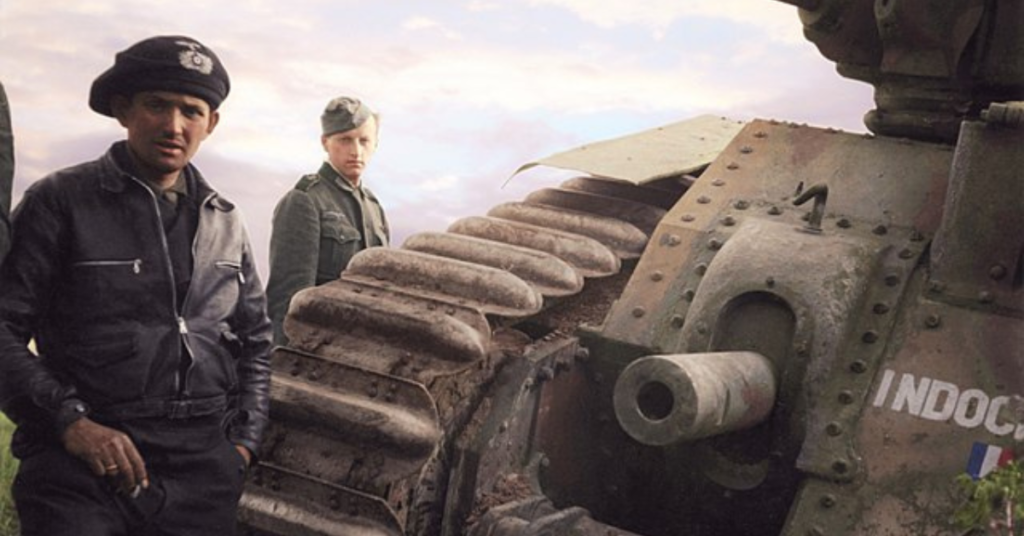
When the Second World War began, German leadership ordered the use of blitzkrieg tactics to quickly overwhelm their enemies. One of the key aspects of this strategy was the use of Panzerdivisions, which, when combined with land and air forces, proved to be very effective against other countries.
Panzerdivisions were used heavily during the German invasion of Poland, the Netherlands, France, Belgium and Luxembourg. They proved to be much more effective than Allied tank units – that is, until they came into contact with the French Char B1. The tank was a force to be reckoned with, so much so that the Germans captured many for use later in the war.
Development and design of the Char B1
The idea for the Char B1 was first proposed in 1919 by Gen. Jean Baptiste Eugène Estienne, who wanted a “Battle Tank” that could break through enemy lines, destroy fortifications and demolish tanks. Soon after, in January 1921, a commission headed by Gen. Edmond Buat began work to create what Estienne envisioned.
Five companies – Delaunay-Belleville, Renault, Schneider, Forges et Aciéries de la Marine et d’Homécourt (FAMH), and Forges et Chantiers de la Méditerranée (FCM) – developed prototypes to compare on a test course. Each was manned by a three-person crew, and it was decided the future tank would be based on the cooperative design from Renault and Schneider.
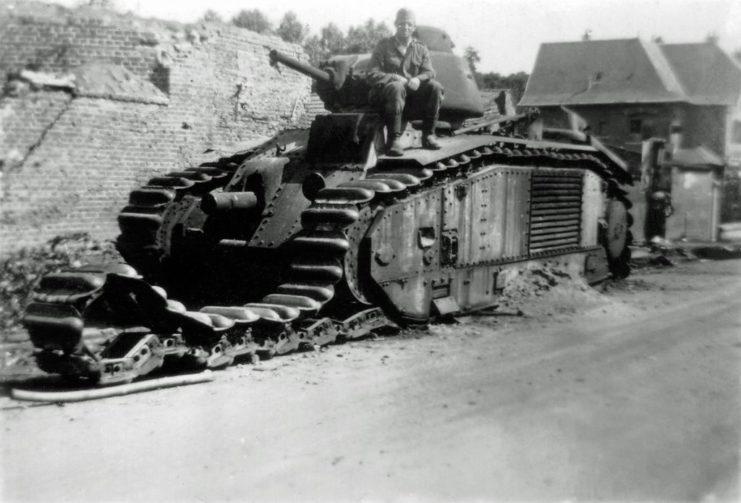
The design included a 75 mm howitzer gun, a Holt-track developed by Forges et Chantiers de la Méditerranée and 40 mm-thick front armor. Another variant, known as the Char B1 bis, was modified to feature 60 mm armor and an APX4 turret with a 47 mm SA 35 gun. Renault eventually became the main producer of the tanks, despite B1s being produced by other manufacturing companies, as well. They were very expensive to build, costing 1.5 million French francs each.
Flaws in the Char B1’s design
Despite its heavy use by the French in the early stages of the Second World War, the Char B1 had some serious flaws. It couldn’t travel as fast as other tanks, with a top speed of only 17 MPH (the bis was even slower). It also flew through fuel quicker, meaning military units had to carry extra supplies, which were heavy.
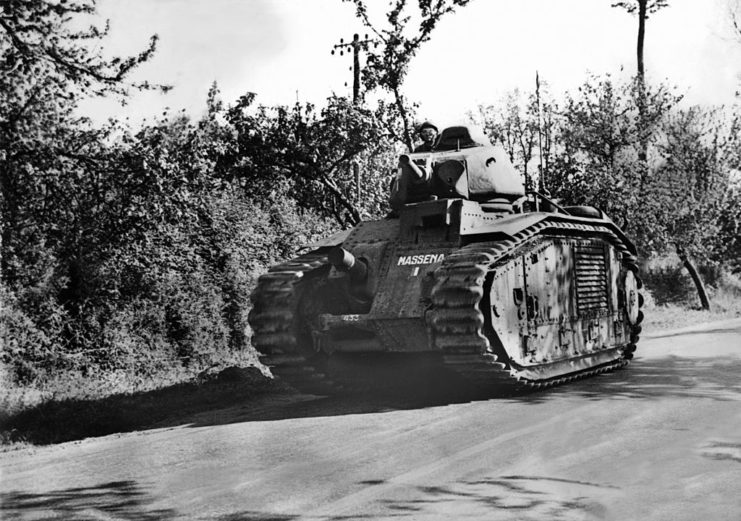
Despite the relatively modern nature of the Char B1 bis, its radio was only able to transmit commands in morse code. Even when better radios were installed, they were difficult to hear over the engine. B1s also had extremely ineffective turret systems, as they were manned by a single person. This meant the commander had to shoot, reload and give orders all at the same time.
Facing the German invasion
Regardless of the problems with the B1 Char, it proved to be an effective against various German tanks. The Panzer II, for example, used a 20 mm gun, which the B1 ended up being entirely invulnerable against. Given this tank was used most by the Wehrmarcht, the French had an incredible advantage.
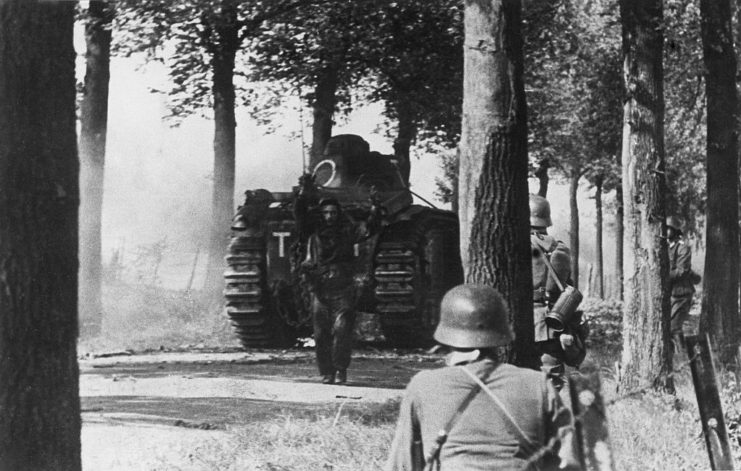
Other Panzer tanks – the III, 38t and IV – only fared marginally better. If they were within 100 meters of the B1, they did have a chance to penetrate its armor, but their success wasn’t particularly good. Smaller anti-tank guns were occasionally successful, but this didn’t occur on a regular basis.
The only weapon that proved to be consistent in stopping the French tanks was the 88 mm flak gun. In one instance, a tank was hit with 90 shells, lost both its main guns and still managed to fight, only to be taken out by a flak gun.
German use of Char B1s
While these Char B1 was successful against the enemy, it wasn’t strong enough to stop France’s fall in 1940. After seeing how successful the B1 was, the German forces captured as many as they could for use in their Panzerdivisions. They didn’t operate as part of the first tank lines, but were used as second line machines or as training and supply vehicles.
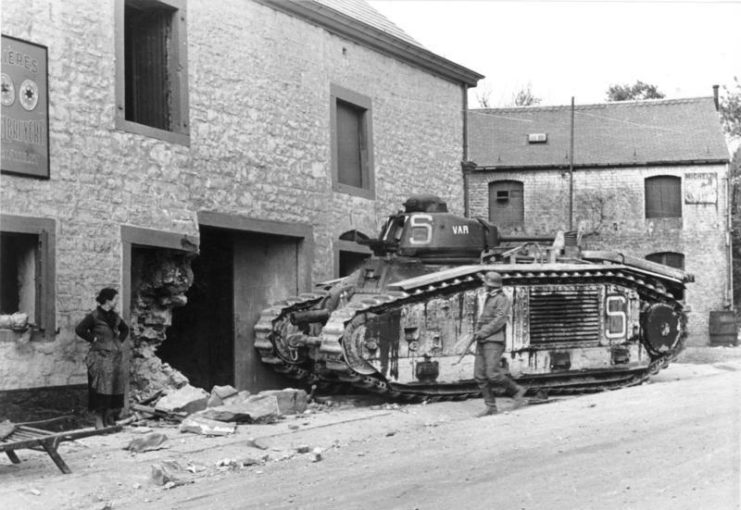
Some of the tanks had their turrets removed and mounted onto German bunkers surrounding the beaches at Normandy. Most unusual was that a number were made into platforms for flamethrowers and renamed as Flammwagen auf Panzerkampfwagen B2s. One of the German training units, Panzer-Kompanie 224, used these modified tanks during Operation Market Garden in September 1944.
The French recapture their Char B1s
The use of Char B1s by the Germans, particularly during the latter part of World War II, gave the French the perfect opportunity to reclaim the vehicles for themselves. French resistance fighters, in particular, were able to repatriate many that had been abandoned. They were then used during the liberation of Paris.
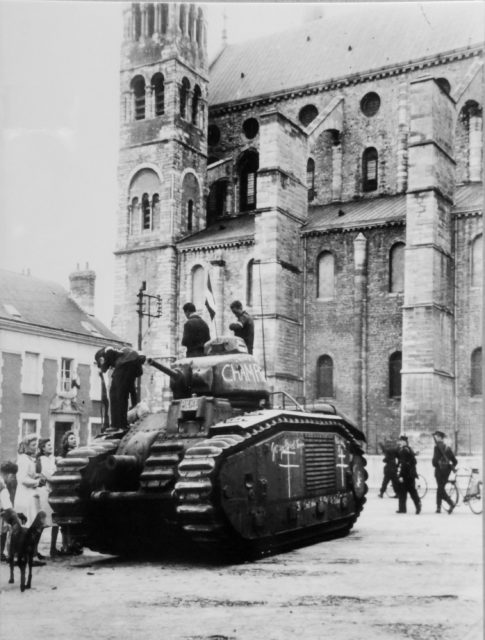
The Free French Army also collected 19 B1s, which had been abandoned in the Renault production factory, and allocated them to Royan and La Rochelle, where the Germans were still holed up. Two were also turned into minesweepers and assisted in the clean up after the war.